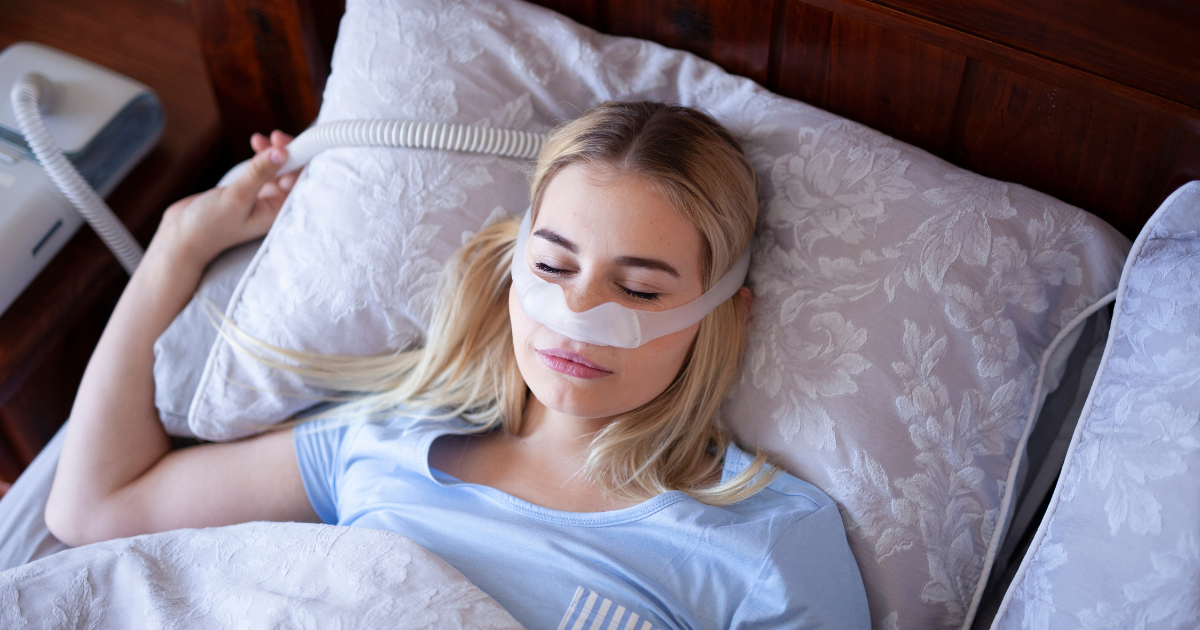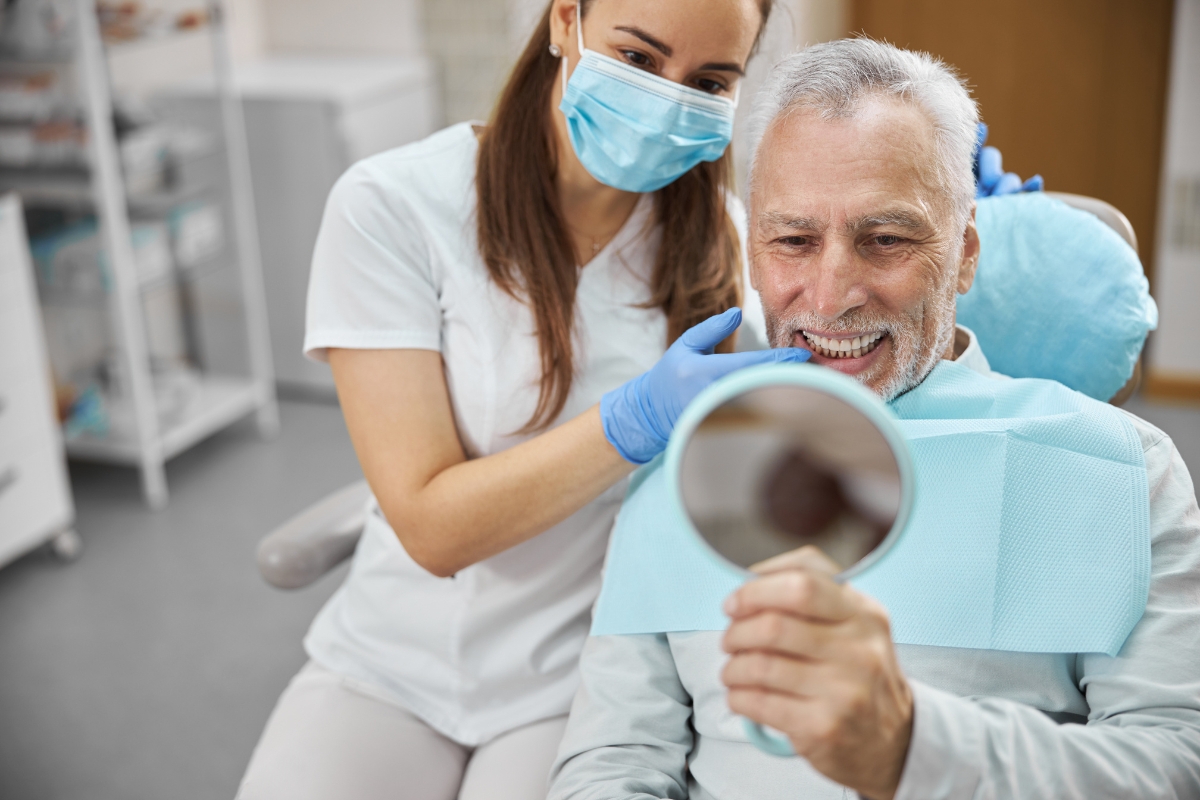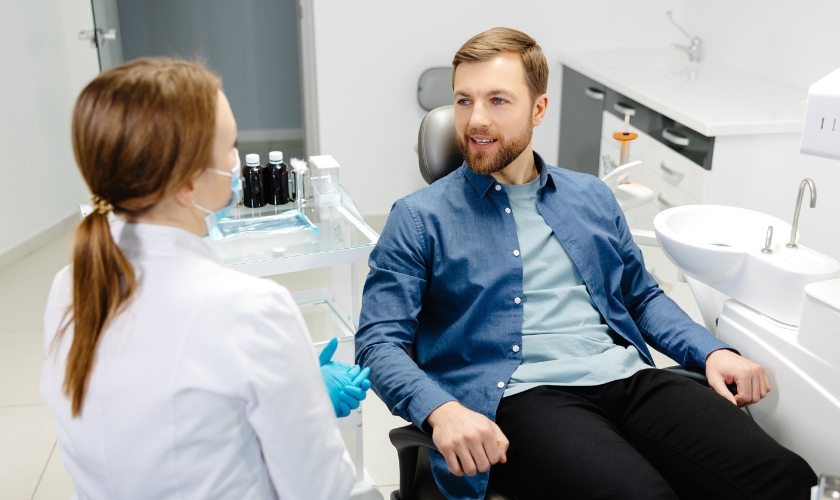
September 25, 2024
Sleep Apnea
Sleep apnea affects millions of people worldwide, disrupting sleep and causing health issues. This condition causes breathing to pause or become shallow during sleep. Untreated sleep apnea can result in serious health problems, including heart disease, high blood pressure, and stroke. Effective treatment is crucial to improving overall health and well-being.
One popular treatment option is the use of oral appliances. These devices offer a comfortable alternative to traditional treatments, like continuous positive airway pressure (CPAP) machines. Oral appliances can help patients breathe better during sleep, making them a valuable option for managing sleep apnea.
Understanding Sleep Apnea
Sleep apnea is a sleep disorder characterized by repeated interruptions in breathing. There are three main types: obstructive, central, and complex sleep apnea. Obstructive sleep apnea (OSA) occurs when throat muscles relax excessively. Central sleep apnea (CSA) happens when the brain fails to signal to the breathing muscles. Complex sleep apnea syndrome is a combination of both OSA and CSA.
Common symptoms include loud snoring, choking or gasping during sleep, and excessive daytime fatigue. Individuals may also experience mood swings and difficulty concentrating. Untreated sleep apnea can lead to severe health consequences, including cardiovascular issues, diabetes, and increased risk of accidents.
Getting an accurate diagnosis is crucial. Sleep studies, also known as polysomnography, help doctors assess sleep patterns and breathing issues. Proper diagnosis allows for effective treatment planning, improving patients’ quality of life.
What Are Oral Appliances?
Oral appliances are custom-made devices designed to treat sleep apnea. Unlike CPAP machines, which use air pressure to keep airways open, oral appliances work by physically repositioning the jaw. This adjustment helps maintain an open airway during sleep.
These devices fit comfortably in the mouth, similar to a sports mouthguard or orthodontic retainer. They come in various designs, catering to different patient needs. Oral appliances offer a more portable and discreet option than CPAP machines, making them a popular choice among patients.
Overall, oral appliances provide a non-invasive approach to managing sleep apnea, promoting better sleep and health.
Types of Oral Appliances
There are two primary types of oral appliances for treating sleep apnea: Mandibular Advancement Devices (MADs) and Tongue Retaining Devices (TRDs).
Mandibular Advancement Devices (MADs): These devices are designed to reposition the lower jaw (mandible) forward. This position keeps the airway open during sleep. MADs can be adjusted for comfort and effectiveness. Many patients find MADs easy to wear, and they often report improved sleep quality. Studies show MADs can significantly reduce snoring and apnea events.
Tongue Retaining Devices (TRDs): These devices prevent the tongue from blocking the throat. A TRD holds the tongue in a forward position using a suction mechanism. This keeps the airway open, reducing the risk of airway obstruction. TRDs are less commonly used than MADs, but they can be effective for some patients, especially those with specific anatomical issues.
Additionally, hybrid devices combine features from both MADs and TRDs. These can be useful for individuals with varying sleep apnea needs.
When choosing an oral appliance, patients should consult with a qualified dentist adept in sleep medicine. Custom fitting ensures maximum comfort and effectiveness, enhancing the chances of successful treatment.
Benefits of Using Oral Appliances
Oral appliances provide numerous benefits for individuals with sleep apnea. One of the primary advantages is their effectiveness in reducing symptoms. Many users experience a noticeable decrease in snoring and improved sleep quality.
Comfort is another significant factor. Compared to CPAP machines, which can feel cumbersome and noisy, oral appliances are much easier to wear. Many patients report that they can fall asleep quickly without feeling restricted.
Portability adds to their appeal. Oral appliances are compact and lightweight, making them easy to travel with. Unlike bulky CPAP machines, they fit easily into a small case. This portability encourages consistent use, which is essential for effective treatment.
Oral appliances can also improve quality of life. Better sleep often leads to increased energy levels, improved mood, and enhanced productivity. Many users find that their daytime alertness and overall well-being improve significantly after starting treatment.
Research shows that oral appliances can help reduce blood pressure and decrease the risk of cardiovascular problems. By effectively addressing sleep apnea, these devices promote better long-term health outcomes.
However, it is essential to note that oral appliances may not work for everyone. Regular follow-up appointments with healthcare professionals ensure that the device remains effective, and adjustments may be necessary to achieve optimal results.
How to Get Started with Oral Appliances?
If you suspect you have sleep apnea, the first step is to consult a healthcare professional. They can evaluate your symptoms and recommend appropriate tests. A sleep study often helps determine the severity of your condition.
Once diagnosed, you can discuss oral appliance therapy with your doctor or dentist. They will assess your specific needs and recommend suitable devices. It is crucial to choose a dental professional in sleep medicine for proper fitting and adjustments.
Custom-fitting the oral appliance is vital for comfort and effectiveness. Your dentist will create a mold of your mouth to design a device that fits perfectly. This personalized approach ensures that the appliance keeps your airway open during sleep.
Follow-up care is essential after you receive your oral appliance. Regular check-ins with your dentist will allow for adjustments as needed. Monitoring your progress ensures that the device continues to work effectively.
Lastly, keep an open line of communication with your healthcare team. Discuss any discomfort or changes in symptoms. This collaboration will help optimize your treatment and enhance your quality of life.
Addressing sleep apnea is crucial for improving overall health and well-being. Oral appliances offer a comfortable and effective treatment option for many individuals. These devices can significantly enhance sleep quality and reduce symptoms of sleep apnea.
If you suspect you have sleep apnea, do not hesitate to seek our professional advice. Your health is essential, and effective treatment options are available. Exploring oral appliances could be the first step toward a better night’s sleep and improved quality of life.
Recent Posts

How Dr. Jay Uses Platelet‑Rich Plasma in Periodontal Care

The Secret to Zero Cavities: Maximizing the Preventive Power of Your “Use-It-or-Lose-It Policy Benefits

What to Expect from Your Dental Implant Healing Process

Dentistry in Vernon: Why Your Mouth is the Window to Your Whole Body

